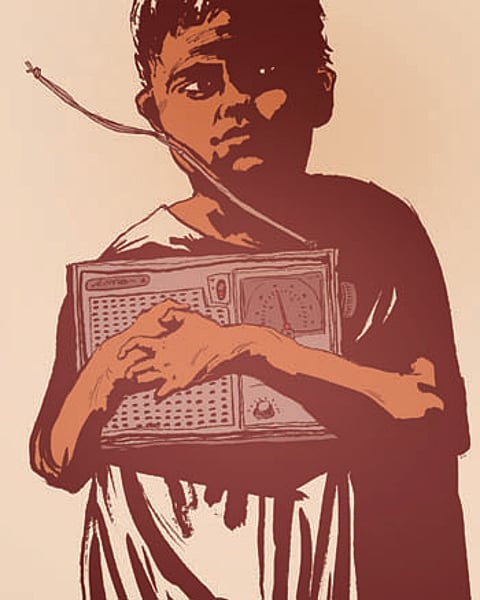Quelled voices and amplified silences
(This is an analysis from our June 2014 print quarterly, 'Growing Media, Shrinking Spaces?'. See more from the issue here.)
I met Sunil Wijesinghe at a small book store stacked between nondescript shops that border the road from the Kandy railway station to Peradeniya. The former station manager of the much-hailed Kothmale Community Radio, among the first community radio stations in Southasia, now oversees the daily functioning of the store. Amidst tending to customers, Wijesinghe sat down to talk about the initial days of community radio, when private broadcasting was hardly prevalent in Sri Lanka. "Those were the days when private radio was not a conspicuous part of the Sri Lankan media. My employer, the Sri Lanka Broadcasting Corporation (SLBC), was the only big player, with national and regional radio services spread across the country. The community radio initiative was started way back in 1981 and our aim was to reach out to those displaced by the Mahaweli project," Wijesinghe recounted, his voice revealing the excitement and pride that came with being part of the experiment that would fundamentally alter the media landscape of the region.
Community radio, by definition, is a form of broadcasting that is owned and operated by communities at the local level, catering to ideas and interests intrinsic to the inhabitants. Community radio broadcasting is set apart from private, state and public service radio by virtue of local participation and ownership. This kind of broadcasting creates a space for content that is not privileged in the mainstream media, and is looked upon as a force that democratises the media landscape.

